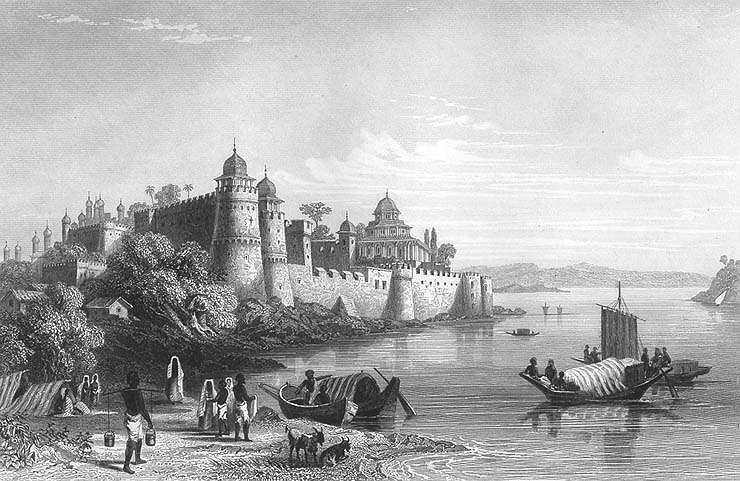Here’s a chronological outline of Prayag (modern-day Prayagraj or Allahabad), its ancient history and the major powers that held sway over this sacred city:
The Foundation in Myth and Legend
- Mythical Origins: Hindu mythology ascribes the creation of Prayag to Brahma, the creator god, who is said to have performed the first sacrifice here. The region is also strongly associated with legends from the Ramayana epic.
- Vedic Period (c. 1500 BCE – 6th century BCE): The Rigveda Parishista mentions Prayag, indicating that the sanctity of the confluence of rivers was recognized even during this early period.
The Age of the Mahajanapadas (c. 6th – 4th centuries BCE)
- The Vatsa Kingdom: Prayag rose to prominence as part of the powerful Vatsa Mahajanapada. While we don’t have detailed records of most Vatsa kings, this period saw Prayag become an important economic and political center.
The Mauryan Dominion (c. 322 – 185 BCE)
- Ashoka the Great: The Mauryan empire united much of India under one rule, and Prayag came under its control. Emperor Ashoka the Great is believed to have erected one of his famous pillars at Prayag, promoting his ideals of Dharma.
- Mauryan Decline: The decline of the Mauryan Empire led to political fragmentation in the region.
Local Dynasties and Kingdoms (c. 2nd century BCE – 3rd century CE)
- Sunga and Kanva Dynasties: After the Mauryans, smaller kingdoms like the Sungas and the Kanvas briefly held sway over Prayag.
- Mitra Rulers: A dynasty of Mitra kings ruled over Prayag, leaving behind evidence of prosperity in the form of their coinage.
- Maghas: The Magha dynasty followed the Mitras. However, a clear chronology of individual rulers is difficult to piece together during this era.
The Golden Age of the Guptas (c. 320 – 550 CE)
- Samudragupta’s Influence: While Prayag was not their capital, the Guptas extended their rule over it. Samudragupta’s inscriptions on the Allahabad Pillar boast of his conquests, suggesting his suzerainty over the region.
- Flourishing Under the Guptas: This period witnessed Prayag transforming into a major center of art, culture, and spirituality. It attracted pilgrims, scholars, and poets from across India.
Harsha’s Empire and Decline (7th – 12th Century CE)
- Harshavardhana: Emperor Harshavardhana of Kannauj extended his influence over Prayag. The writings of the Chinese pilgrim Xuanzang describe the city in detail during this period.
- Later Fragmentation: Following Harsha’s death, Prayag lost its central importance and became fragmented once again. Local dynasties rose and fell until the Islamic conquests of India in the 12th Century.
Important Notes
- Challenges of Ancient History: It’s important to remember that ancient Indian history sometimes lacks precise records, especially regarding specific rulers and dates of smaller local kingdoms.
- Ongoing Research: Archaeological excavations and interpretations of texts continue to shed new light on Prayag’s rich past.
The history of Prayag is intertwined with the rise and fall of great empires and local kingdoms. Its strategic location and religious significance made it a coveted territory throughout the ages. While we may not have a complete list of all its kings, Prayag’s story offers a fascinating glimpse into the ever-changing political and cultural landscape of ancient India.



